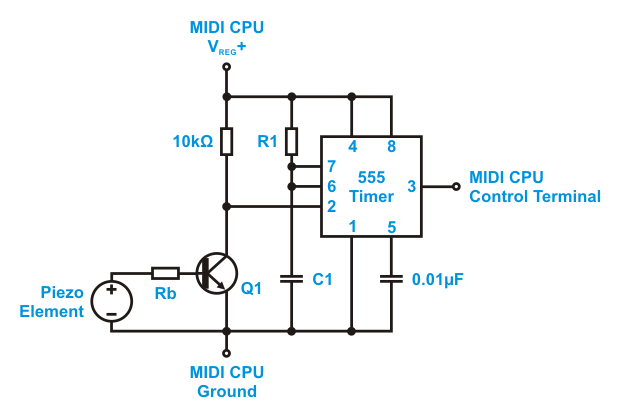Interactive flamenco
-
i'm doing something very similar - but very simple - with visuals reacting to flamenco as part of a show that opens next week. using a Samson Go Mic sat on the stage. its working really well.
-
Not USB and I do not know what these are made with(electret most likely).
But this one http://dx.com/p/lm393-sound-detection-sensor-module-black-221267 could be promising. I just did not get these at the time. I shall experiment in few days. These are Arduino compatible(rectified) - producing 0-5V. I will mount these under the stage module probably to avoid unwanted ambient noises. -
I am using mic input to control visuals already. The trick is to get the force of a step to produce MIDI notes accordingly. -
Speaking of piezo mics, I have this model, which plugs directly into sound input on my mac: http://www.pulsecontroller.com/ , which looks very nice in the video, I however am yet to try it.
--8 -
@eight pulsecontroller looks nice. Have you tried it?
-
@feinsinn: I played a little bit with it, but am yet to use in the production. It behaved as expected looking at their videos.
--8 -
I bought it too. It does beautifully what it's promising. Plain and simple.
-
I got the PulseController as well. You said it works as advertised.
I agree. Only ANY piezo trigger attached to the computer does exactly the same. The supplied software seems to be not much more that I could make with Isadora.OK, these are just my first impressions. But it seems that the idea behind this device is to read a trigger as a bang+velosity and trigger MIDI notes one after another - according preset order(scale, music style etc).At the moment I am using rather successfully a toy spy microphone, that is just an amplified piezo with built-in battery.http://www.ebay.com/itm/Highly-Sensitive-Wall-microphone-voice-bug-ear-listen-by-wall-device-Pro-spy-/171133519112?pt=US_Headphones&hash=item27d85a4508It is very sensitive and extremely handy with adjustable volume. Battery lasts very well too(I have not tested the actual capasity, but running 6hours strait was no problem).So I am not too impressed with the thing actually. But as what it is intended to it is OK. -
@Vanakaru Could You tell us a little more on how you worked with the Spy Microphones - I just ordered one - ? (Maybe opening another thread ?)
-
The spy mic is really nice device. It has internal battery that hold up very well(it has not run out on me at all). So you need just a wire to the sound-IN. The mic amp with input level pot is very handy.Since it holds regular piezo mic/trigger everything you need to worry about is the same with any piezo. Meaning that piezo is like a bell that produce wild range of electric charge and flux. I tried various conditioning techniques, but none were perfect.I got this trick recently and have not tested it yet. It will limit the time you get the piezo ringing. MIDI CPU here is one of these(it is very reliable MIDI device BTW)http://store.highlyliquid.com/collections/midi-controllersbut it should work with Arduino analog-in as well.I contacted the author of PulzeController and asked for a advise to condition the piezo signal(he has done it with MAX MSP most likely), but after initial few messages he never returned to the subject. Trade secrets - I assume. So the SpyMic will work with Pulze just as well or better.
-
Did you try working with Pure data 's ~fiddle or Plogue's Spectral Bidules to get Spectral to Midi data ?
-
No, I have not grasped PD at all(athough tried many times). Now for Plogue I now pretty well, but I have not figured how to get live audio input to it. Could you explain this a bit. Spectral does not allow any other inputs.
-
Start with FFT bidule ...
-
Very interesting.
Although I can not figure is how to make Spectral to sustain the note a bit longer. It sends the noteOff almost immediately. When I route it through Isadora and add delay to trigger noteOff then it works better.Also Spectral sends too many notes rapidly even if I tweak the threshold. It seems to be sending more notes the louder is incoming audio. My goal is to get the scale of notes according to the volume of the audio. More volume=higher note. So I can not get good result with Plogue alone. -
I did quite a bit of research on pulse controller more than a year ago. I found how they did it and it is not doable in isadora. Well everything is doable but the sound analysis.
The sound object that does the trick (super fast attach detection) is called bonk~ and what bonk does is to analyze the attack of a sound coming from the piazo AT A SAMPLE LEVEL though 44.1000 times per second. That is itThere is another max/msp and Puredata object called fiddle~ that does a similar thin plus a bunch of other amazing stuff (like pitch detection).Hope it helps. Sorry I can't be with you in Berlin in a fed days....